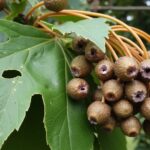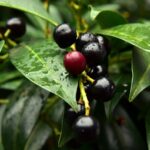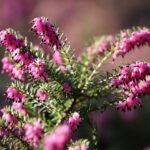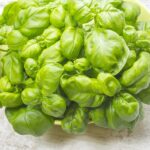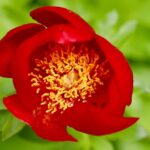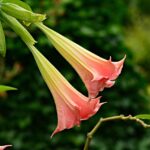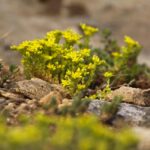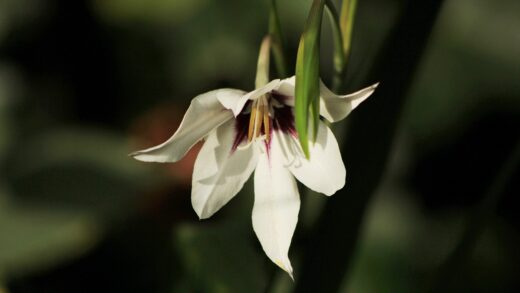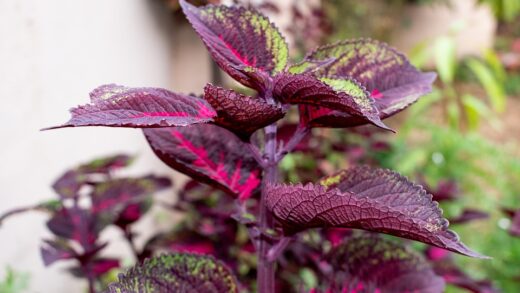Understanding the specific water needs of Darwin’s barberry is fundamental to its cultivation, ensuring the plant remains healthy, vibrant, and resilient. This evergreen shrub, native to the temperate climates of Chile and Argentina, is remarkably drought-tolerant once it has established a deep and extensive root system. However, this resilience does not mean it can be completely neglected, especially during its formative years and during prolonged periods of dry weather. The key to successful irrigation is to provide consistent moisture to encourage strong root growth initially, then to allow the plant to rely on its natural hardiness, watering only when necessary. This balanced approach prevents both the stress of dehydration and the significant risks associated with overwatering.
For newly planted shrubs, the first year is a critical period for water management. During this time, the plant is focused on establishing its roots in the new environment, and a consistent supply of moisture is essential for this process. The goal is to keep the soil around the root ball consistently moist, but importantly, not waterlogged or saturated. In the absence of regular rainfall, this typically means providing a deep watering once or twice a week, allowing the soil to dry slightly between sessions. This encourages roots to grow deeper in search of moisture, building the foundation for future drought tolerance.
As the plant matures and its root system becomes well-established, its water requirements decrease significantly. A mature Darwin’s barberry can often sustain itself with natural rainfall in many temperate climates, requiring supplemental irrigation only during extended heatwaves or droughts. The visual cues from the plant itself are the best indicators of its needs. If the leaves begin to look slightly wilted or lose their glossy sheen, it is a clear sign that the plant is thirsty. Responding to these signals with a thorough, deep soaking is far more effective than frequent, shallow watering.
The method of watering is just as important as the frequency. It is always best to water Darwin’s barberry at the base of the plant, delivering water directly to the root zone. Using a soaker hose or drip irrigation system is ideal as it minimizes water waste through evaporation and, crucially, keeps the foliage dry. Wet foliage, especially overnight, can create the perfect conditions for fungal diseases like powdery mildew and rust to take hold. Therefore, watering in the morning is also advisable, as it gives any splashed leaves plenty of time to dry out during the day.
Establishing new plants with proper watering
The initial watering strategy for a newly planted Darwin’s barberry is crucial for its survival and successful establishment. Immediately after planting, provide a deep and thorough soaking to settle the soil around the roots and eliminate any air pockets. This initial drench ensures intimate contact between the roots and the soil, which is vital for the uptake of water and nutrients. For the first few weeks after planting, the soil should be checked regularly, every two to three days, to ensure it remains consistently moist as the plant recovers from transplant shock.
Throughout the first full growing season, a consistent watering schedule must be maintained. The aim is to promote the development of a deep, rather than shallow, root system. To achieve this, water deeply and infrequently, rather than little and often. A deep soaking encourages roots to grow downwards in search of moisture, making the plant more stable and resilient in the long term. Allow the top few centimeters of soil to dry out before watering again, as this prevents the root zone from becoming oversaturated and deprived of oxygen.
The amount of water required will depend on several factors, including soil type, climate, and rainfall. In sandy soils, which drain quickly, more frequent watering will be necessary than in loam or clay-based soils that retain moisture for longer. Similarly, during hot, windy weather, moisture loss from the soil and the plant’s leaves (transpiration) will increase, necessitating more frequent irrigation. The best approach is to be observant and adjust your watering routine based on the specific conditions of your garden and the prevailing weather patterns.
By the end of the first year, if cared for properly, the Darwin’s barberry should have developed a robust enough root system to begin weaning it off such a frequent watering schedule. You can start to gradually extend the interval between waterings, encouraging the plant to become more self-sufficient. This transition is key to developing the drought-tolerant characteristics for which the shrub is known. Proper watering in the first year is a direct investment in the long-term, low-maintenance future of the plant.
Watering mature and established shrubs
Once a Darwin’s barberry is fully established, typically after two to three years in the ground, its irrigation needs become minimal. Its extensive root system can now efficiently seek out moisture deep within the soil profile, making it highly resilient to dry spells. In many regions with regular rainfall, established plants may not require any supplemental watering at all, thriving on what nature provides. This low-maintenance aspect is one of the plant’s most appealing qualities for gardeners seeking a sustainable and water-wise landscape.
The need for supplemental watering for a mature plant is primarily dictated by extreme weather conditions. During a prolonged drought or an exceptional heatwave, even the most established shrubs can begin to show signs of stress. Watch for subtle changes in the plant’s appearance, such as a slight drooping of the leaves or a dulling of their usual dark green, glossy finish. These are early indicators that the plant’s water reserves are being depleted and that it would benefit from a deep drink. Ignoring these signs can lead to more severe stress, including leaf drop and reduced flowering.
When you do need to water an established shrub, the principle of deep soaking remains paramount. A light sprinkling on the soil surface will do little good, as the water will likely evaporate before it can penetrate to the deeper roots where it is most needed. Instead, apply water slowly and deeply over a prolonged period, allowing it to soak several inches into the soil. Using a soaker hose placed around the drip line of the shrub for an hour or so is an effective and water-efficient method to achieve this deep hydration.
After a deep watering, the plant should recover quickly, and you will not need to water again until it shows signs of thirst. For a mature barberry, this could be several weeks or even a month later, depending on the conditions. It is far better for the plant’s health to provide one significant, deep watering during a drought than to give it small amounts of water frequently. This approach reinforces the deep rooting habit and maintains the plant’s natural resilience and independence in the garden.
The dangers of overwatering
While ensuring adequate moisture is important, overwatering is a far more common and serious threat to the health of Darwin’s barberry. This shrub is naturally adapted to environments with good drainage and cannot tolerate having its roots sitting in waterlogged soil. Excessive watering deprives the roots of oxygen, a condition known as hypoxia, which is essential for their function and survival. Without oxygen, the roots are unable to absorb water and nutrients effectively, leading to a situation where the plant can show signs of wilting even when the soil is wet.
The most severe consequence of overwatering is root rot, a fungal disease that thrives in anaerobic (oxygen-deprived), wet conditions. Pathogens in the soil attack the compromised root system, causing it to decay and turn black and mushy. Once root rot takes hold, it is very difficult to reverse and often proves fatal to the plant. Symptoms above ground include yellowing leaves (chlorosis), stunted growth, leaf drop, and a general lack of vigor. These symptoms can be misleading, as they often mimic those of underwatering, tempting the gardener to water even more and exacerbating the problem.
To avoid overwatering, always check the soil moisture before reaching for the hose. The simplest method is to insert your finger into the soil to a depth of about five to seven centimeters. If the soil feels damp at that depth, there is no need to water. Learning to recognize the weight of a potted plant when it is wet versus dry is another useful skill. It is also crucial to ensure your plant is in well-draining soil from the outset, as this provides a vital buffer against accidental overwatering. If you have heavy clay soil, amending it with organic matter is not just recommended, it is essential.
In summary, a cautious approach to watering is always best for Darwin’s barberry. It is a plant that would much rather be slightly too dry than slightly too wet. By understanding the signs of both underwatering and overwatering, and by always assessing the soil conditions before acting, you can provide the perfect moisture balance. This diligence will protect your shrub from the insidious threat of root rot and ensure it remains a healthy, thriving component of your garden for many years.
Irrigation for container-grown barberry
Darwin’s barberry grown in containers has a completely different watering regime compared to its garden-planted counterparts. The limited volume of soil in a pot dries out much more rapidly, meaning the plant is entirely dependent on the gardener for its moisture needs. During the active growing season of spring and summer, regular and frequent watering is essential. In warm or windy weather, this could mean watering every day or every other day to prevent the potting mix from drying out completely.
The key to watering container plants effectively is to be thorough. When you water, do so until you see water flowing freely from the drainage holes at the bottom of the pot. This ensures that the entire root ball has been saturated and also helps to flush out any excess mineral salts that can accumulate in the potting soil over time. After a thorough watering, allow the pot to drain completely and do not let it stand in a saucer full of water, as this will lead to the same waterlogged conditions that cause root rot.
Monitoring the moisture level in the pot is a daily task in summer. The “finger test” is again the most reliable method: insert your finger into the top few centimeters of the compost. If it feels dry, it is time to water. Do not rely on a fixed schedule, as the plant’s needs will change daily depending on the temperature, humidity, and sunlight. As autumn approaches and the weather cools, you can gradually reduce the frequency of watering, but never allow the root ball to dry out completely, as the evergreen foliage continues to lose some moisture even in winter.
During the winter months, the plant’s water requirements are significantly reduced as growth slows down. However, it is not fully dormant and will still need occasional watering, especially during dry, mild spells. Check the pot every couple of weeks and water only when the top layer of compost is dry. Container-grown plants are more vulnerable to freezing, and a completely dry root ball is more susceptible to frost damage than a slightly moist one. Therefore, maintaining a slight level of moisture in the compost provides some insulation and protection for the roots during the cold season.
📷 Michael Wolf, CC BY-SA 3.0, via Wikimedia Commons

